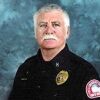Some words fall out of use over time and essentially disappear from our vocabulary. In the firehouse, such words include fireman and paperwork.
There’s another word we don’t hear often, although it has not disappeared – fear. That’s the word no one wants to say aloud, as if the utterance will unleash some insidious evil.
Firefighters will talk about having a hard time on the roof or being stalled or frustrated on the stairs of a basement fire. But if you ask them to recount lowering the pressure on a commercial boiler with bolts shaking, that’s a call they don’t want to discuss. Such talk produces an uneasy feeling in the stomach, the normal response by all living things to physical or emotional danger – and now rooted in memory.
The word fear has Germanic (Gefahr) and Dutch (gevaar) origins that mean danger or threat. A fear of a particular thing is a phobia – and there are hundreds of them: Linonophobia is a fear of string. A fear of public speaking is called glossophobia. Oprah Winfrey once revealed she has globophobia – a fear of balloons. It would be difficult to serve in the fire service if you had pyrophobia, fear of fire.
Regardless of definitions, emergency service professionals experience fears more than most people in society because their distress is measured in terms of life and death, not string or balloons.
Five basic fears we all experience
Management consultant and author Dr. Karl Albrecht identifies five basic fears that all people experience:
1. Loss of life: The most basic is fear of extinction or the loss of life – in this case, yours.
2. Mutilation: Fear of mutilation, in most cases, involves injury, illness and disability. Playing sports certainly requires overcoming this fear.
3. Loss of autonomy: Loss of autonomy is a fear that explains why paraplegics fight so hard to regain their independence.
4. Separation: Fear of separation has many levels and degrees. It involves love, brotherhood and all that we treasure and care about collectively and individually.
5. Ego death: Lastly, there is what Albrecht calls the fear of “ego-death,” which results from repeated mistakes, feelings of humiliation and being ostracized by the group.
All fears fall into these five categories – but they can be dealt with. For instance, a fear of heights when working on a roof is a fear of extinction, compounded by not being “grounded.” While we all may not have this specific fear, all of us understand the fear of dying. Understanding that your fears are among the five basic fears makes them more manageable.
Minimize and desensitize yourself to fear
There are simple steps you can practice to help understand and minimize fears you experience on the fireground or emergency scene.
The first step in minimizing fear is to control it. In other words, for a firefighter to minimize fear, they must recognize and acknowledge it. Trying to hide from fear or worse, ignoring it, sets firefighters up for repeated failure.
The second step is to understand fear by defining it; this helps control negative reactions.
For example, you might be uncomfortable utilizing an SCBA in tight spaces. While this fear is called claustrophobia, you can generalize the fear into one of separation and losing your breath. In this situation, you are physically distanced and separated from your environment, and your body does not like the situation. Reducing this large topic of separation down to your personal experience gives you answers and helps you eventually cope when you are in a confined space.
You can reduce your fear by desensitizing yourself to the experience of being in a small space, for example. To minimize that anxious feeling of things pressing inward, don your air pack and spend a few minutes in a small closet. Over time, increase the time spent in the closet. Your physical reactions will gradually decrease, and your fear is dealt with in a controlled setting. Desensitization is a proven technique in dealing with specific fears.
Face your fears
Most firefighters will admit in private that they were drawn to the excitement of the job. They quickly learned, however, the effort it would take to become a solid firefighter – learning to overcoming natural fear.
Study, train, and drill until knees blister and anxiety fades away.
Some academy instructors try to help new recruits by discussing their own. Don’t hesitate to reach out to them to talk about your own fears and seek advice about methods to resolve them. That’s why these men and women are teachers.
Whether information or insights about fear come from an experienced firefighter or fire service trainer, if you listen closely, you will hear the fascination and reluctant respect of having faced their dragons.
Deep down inside, great firefighters see these accelerated experiences as opportunities, moments to be dealt with like any learning discipline – overcoming the challenge and the fear – sometimes together, sometimes not.













